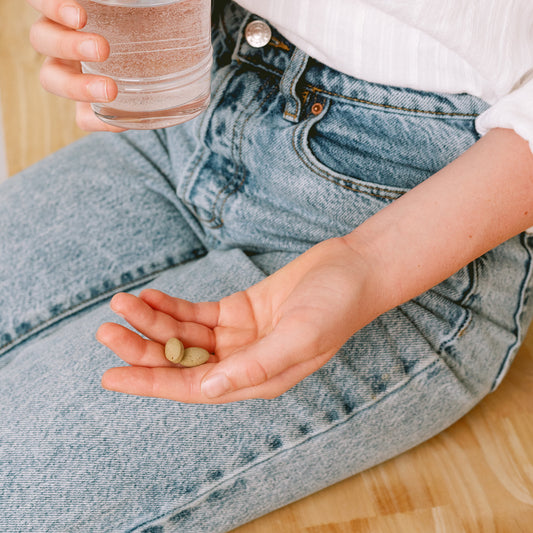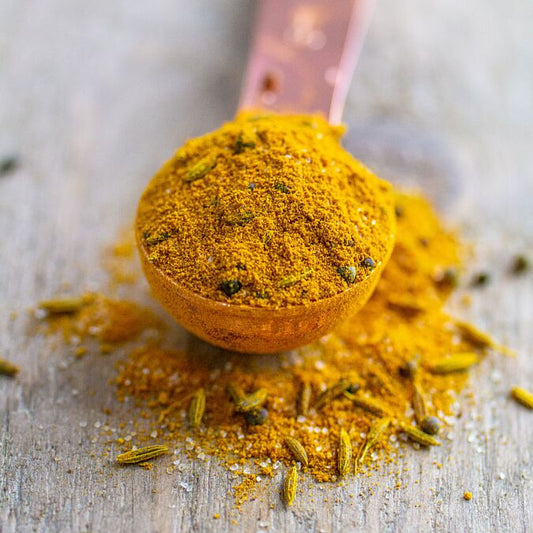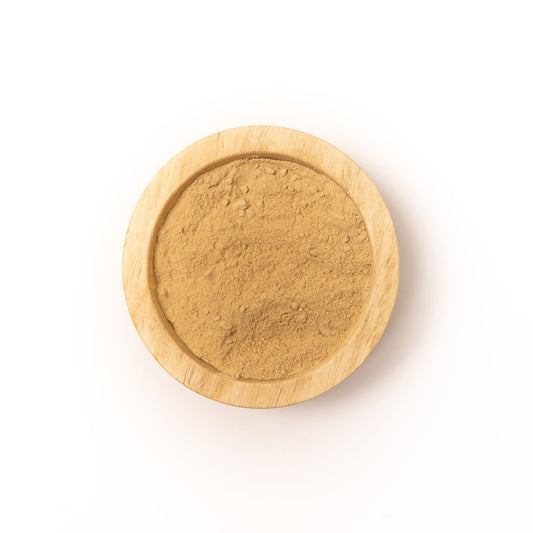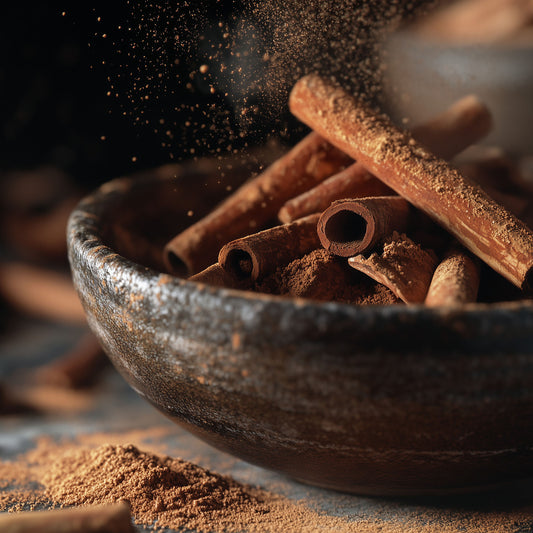Kapha-Balancing Diet
Looking to balance kapha dosha? One of the best things you can do is shift your eating habits to embrace a kapha-balancing diet. In Ayurveda, a balanced kapha diet focuses on freshly cooked, whole foods that are light, dry, warming, well-spiced, and relatively easy to digest—ideally served warm or hot.
These foods help to reduce excess kapha by kindling strong digestion, regulating moisture levels in the body, maintaining adequate heat, and by supporting the healthy elimination of natural toxins.
Because kapha is so substantive in nature, an appropriate diet is actually one of the most effective ways to support a state of balance.
Kapha thrives on a fairly minimalistic diet with smaller meals, little to no snacking, fewer sweets, an abundance of fresh fruits and vegetables, a variety of legumes, minimal alcohol, and lighter fare all around. That said, finding a diet that is appropriately satisfying is crucial to your success; so it's extremely important that you enjoy the foods that you do eat.
What follows are some specific dietary principles that will empower you to balance kapha dosha and support your greatest vitality. These recommendations will also support a healthy Ayurvedic weight loss routine and can even be helpful for all doshas during kapha season.
In Ayurveda, late winter and spring are considered kapha season because the qualities of kapha dosha are heightened in the environment. Balancing kapha at this time is a great way to work with the energies of spring to support optimal balance and well-being.
Embrace Slow, Steady, and Small Shifts
Please understand that following a kapha-pacifying diet is a practice far more than it is a collection of absolutes. No one expects you to wake up tomorrow morning and eat a perfectly kapha-balancing diet for the rest of your life! Even the most recognized Ayurvedic teachers have the occasional difference of opinion, which can create some discrepancies between different Ayurvedic diet and recipe resources.
The point being, successfully following a kapha-balancing diet is not a matter of sticking to a strict set of dos and don'ts, or getting overly bogged down in the details. In fact, it is often far more helpful to pay attention to the overarching patterns and generalities.
At the end of the day, any strides that you take to shift your diet toward being more kapha-balancing than it is today should be considered wins.
Think of the process as an intention that you are holding, and also a powerful invitation to increase your self-awareness. We recommend that you begin by noticing where you might be able to make small, incremental changes in support of your healing journey—at a sustainable pace.
From there, notice the ways in which these small shifts are supporting you, and where perhaps some of your current habits are costing you. If you enjoy a food that is kapha-aggravating, notice how you feel when you do eat it.
Does it increase the symptoms of excess kapha in your digestive tract (heaviness, sluggish digestion, lethargy, brain fog, or stools that feel sticky or incomplete)? Is there anything that you can do to serve this food in a more kapha-balancing manner—by reducing the quantity, serving it warm, or adding digestive spices (like ginger, black pepper, cumin, coriander, and turmeric)? And if so, do these adjustments change your digestive experience?
Qualities to Favor
Now that we're on the same page about how to approach this, we'd like to introduce the qualities that you'll want to favor in your diet, and by contrast, the qualities that will tend to be inherently kapha-aggravating. By nature, kapha is heavy, cool, oily, and smooth, so eating foods that neutralize these qualities—foods that are light, warm, dry, and rough—can help to balance excess kapha.
This section offers a closer look at how you can begin to recognize the qualities of different foods. The intention is to give you a more intuitive grasp of what will reduce kapha, without having to constantly reference lengthy lists of foods to favor and avoid.
Favor Light and Airy over Dense and Heavy
Foods that embody the light quality are the antithesis to kapha's heaviness. Lightness can be determined both by the sheer weight of a food and also by its density. Fruits and vegetables are typically wonderfully light, so a diet that is built around a tremendous abundance of fresh fruits and vegetables—preferably cooked—is a great start.
A modest amount of raw fruit may be suitable, and, in moderation, kapha is also balanced by salads and other raw vegetables when seasonally appropriate (usually in the warmer spring and summer months). Green or black teas are quite light, especially when compared with coffee.
In general, foods that are a bit heavy for kapha include hard cheeses, puddings, nuts, cakes, pies, wheat, most flours, breads, pastas, red meat, and deep fried foods, which are also excessively oily (see below).
Eating too much in one sitting also leads to excess heaviness, so it's important to try not to overeat. A good rule of thumb is to fill the stomach one-third full of food, one-third full of liquid, and to leave one-third empty for optimal digestion. Very heavy meals and highly processed foods also tend to aggravate the heavy quality in kapha and are best reduced or eliminated.
Favor Warm over Cool or Cold
The warm quality can be emphasized by eating foods that are warm in temperature or that have a warming energetic—and by using heating spices generously (most spices are naturally heating, and almost all of them balance kapha). Make cooking easy by using Turmeric Masala or CCF Spice Mix.
Cooked foods tend to offer a warmer energetic and are typically easier to digest; so cooked food is preferable to raw—especially in the colder months.
Kapha does best to drink room temperature, warm, or hot beverages and often benefits from sipping hot water throughout the day as well. If you like that, you can also try sipping warm water with a dab of raw honey in it; honey is both heating and detoxifying.
On the other hand, it is best to reduce or minimize foods with a cooling energetic, cold and frozen foods or drinks, carbonated drinks, and even leftovers that have been kept in the refrigerator or freezer. The cold quality is inherently increased in these foods, so freshly cooked is best.
Consuming large quantities of raw fruits and vegetables can also be quite cooling, so it is best to enjoy these foods in moderation and when seasonally appropriate (i.e. primarily in the warmer months). But again, you have to be realistic about what you can take on, and a green salad or leftover mung dal is generally going to be far more kapha-pacifying than a freshly-cooked but heavier meal eaten out.
Favor Dry over Moist or Oily
Kapha's oiliness is offset by exceptionally drying foods like beans, white potatoes, dried fruits, rice cakes, popcorn, and an occasional glass of dry red or white wine. When cooking, it is important to use as little oil as possible. You can even play with substituting water for oil to prevent sticking.
Do your best to minimize oily foods like avocado, coconut, olives, buttermilk, cheese, fried eggs, cow's milk, wheat, nuts, and seeds.
It is also important not to over-hydrate because kapha can and does retain water easily. Try to drink only the amount of fluid that your body requires, according to your climate and activity level. In addition, reduce your consumption of especially moist foods like melons, summer squash, zucchini, and yogurt, as these can also be too watery for kapha.
Favor Rough over Smooth
There's a reason that fruits and vegetables are sometimes called roughage; their fibrous structure gives them a very rough quality. This is why kapha responds so well to eating large quantities of fresh fruits and vegetables.
That said, these foods are often much easier to digest when cooked, so be careful not to overdo raw foods, and adapt your enjoyment of them according to the season (see our Seasonal Guides for further support). Some foods, like broccoli, cabbage, cauliflower, dark leafy greens, and many beans, are exceptionally rough and are therefore wonderful for countering kapha's smooth, oily nature.
Conversely, eating foods and preparations that are smooth in texture—things like bananas, rice pudding, hot cereal, milk, cheese, and the like—can quickly aggravate kapha.

Tastes to Favor
Kapha is pacified by the pungent, bitter, and astringent tastes and aggravated by the sweet, sour, and salty tastes. Understanding these tastes allows us to make better choices whether or not we have an extensive list of kapha-balancing foods handy.
Emphasize: Kapha Foods to Embrace
Pungent
- Pungent is a spicy, hot flavor like that found in chilies, radishes, turnips, raw onions, and most spices. In fact, most spices are tremendously kapha pacifying—see our list of foods to Kapha-Pacifying Foods.
- The pungent taste is light, hot, rough, and dry—all beneficial for kapha. In essence, if you like spicy or fiery hot, go for it. And even if you don't, favor a wide variety of milder spices in your dishes—things like cardamom, cloves, cinnamon, cumin, ginger, garlic, paprika, and turmeric.
- The pungent taste cleanses the mouth and clarifies the senses. It stimulates digestion, liquefies secretions, clears the channels of the body, encourages sweating, and thins the blood.
Bitter
- The bitter taste predominates bitter greens (like kale, dandelion greens, collard greens, etc.), and is also found in bitter melon, Jerusalem artichokes, burdock root, eggplant, dark chocolate, and in kapha-pacifying spices like cumin, neem leaves, saffron, and turmeric.
- The bitter taste is rough, drying, light, and generally reducing—all qualities that benefit kapha, but it is also cooling, so it's important to add some warming spices to bitter foods.
- Bitters cleanse the pallet and improve the sense of taste. They tone the skin and muscles, improve appetite, support digestion, and help to absorb moisture, lymph, muscle fat, adipose tissue, and sweat.
Astringent
- The astringent taste is basically a flavor of dryness—a chalky taste that dries the mouth and may cause it to contract (picture biting into a very green banana).
- Legumes like adzuki beans, black-eyed peas, chickpeas, kidney beans, lentils, pinto beans, and soybeans are classically astringent in taste and very kapha-pacifying. Some fruits, vegetables, grains, baked goods, and spices are also astringent in taste—things like apples, cranberries, pomegranate, artichokes, broccoli, cauliflower, lettuce, popcorn, rice cakes, crackers, basil, coriander, dill, fennel, parsley, and turmeric.
- The astringent taste is dry, rough, somewhat light, and it reduces kapha. But like the bitter taste, it is also cold, so it's best to add warming herbs and spices to astringent foods. In some cases (as with pomegranate), simply enjoying these foods in the warmer seasons makes a lot of sense.
- Kapha benefits from the compressing, absorbing, nature of the astringent taste, which also helps to tone bodily tissues and utilize excess fluid.
Minimize: Kapha Foods to Avoid
Sweet
- The sweet taste is cold, heavy, moist, oily, and kapha-provoking, especially in excess.
- Reduce or eliminate the intake of refined sugar and sugary sweet foods as much as possible.
- It would be impossible eat a nutritious diet and avoid the sweet taste altogether. But it is certainly reasonable to reduce the portions of naturally sweet-tasting foods like fruits, grains, root vegetables, milk, ghee, yogurt, eggs, nuts, seeds, oils, and meats.
- Sweet foods tend to aggravate kapha's tendency toward heaviness, obesity, lethargy, and excess sleep. They can also cause excessive mucus, aggravate colds and coughs, and depress the appetite in an unhealthy way.
Sour
- Minimize sour foods like vinegar, cheese, sour cream, green grapes, oranges, pineapple, and grapefruit.
- The moistening and oily qualities of the sour taste aggravate kapha.
- The sour taste can increase thirst, create heaviness in the eyes, cause laxity in the body, and aggravate water retention or swelling.
- An occasional squeeze of lemon or lime juice is the best way for kapha to ingest the sour taste.
Salty
- The salty taste is almost singularly derived from salt itself.
- Much like the sour taste, it is salt's moist and oily nature that aggravates kapha.
- In excess, the salty taste can cause water retention, high blood pressure, intestinal inflammation, grey hair, wrinkles, excess thirst, and it can impede the sense organs. Further, it tends to spark a sharp desire for stronger flavors and can similarly trigger insatiability and greed.
How to Eat
When it comes to pacifying kapha, how we eat can have a profound impact on our degree of success, so this is an especially useful place to focus, if the prospect of radically changing your diet feels overwhelming right now.
As most people with kapha digestion know, kapha's love of food and tendency toward emotional eating can easily lead to overindulgence. For this reason, kapha does well to stick to three square meals each day, and sometimes, just two meals are sufficient. Eating at consistent times from one day to the next also helps to strengthen the digestive fire while regulating the appetite.
You can further counteract sluggish digestion by chewing a slice of fresh ginger (about the size of a nickel) with a pinch of sea salt, a few drops of lime juice, and about 1/4 teaspoon honey about 30 minutes before both lunch and dinner. This helps to prepare the digestive system to receive food and to process it effectively.
During meals, it is very important to eat in a peaceful environment and to give your full attention to the act of being nourished so that your body registers satisfaction. This will help reduce overeating and emotional eating.
Fast foods, sweets, and excessive amounts of bread and other comfort foods can be especially kapha-provoking. While you will likely not succeed in avoiding all kapha-aggravating foods, their detrimental potential can be minimized by making sure that they are served warm, in small quantities, and with the support of heating herbs.
Lastly, because kapha digestion is generally a bit boggy, periodic fasts or cleanses can be very helpful—especially if you tend to be able to sustain your energy over long breaks between meals. A short fruit or juice fast (think apple or pomegranate), or a longer monodiet of kitchari can be very supportive.
Suggested Meals
The following kapha-balancing recipes will help you get started as you incorporate the principles of Ayurveda into your daily routine. As you become more and more familiar with the foods that support your well-being, feel free to play around with altering these recipes or creating your own.
Breakfast
Breakfast is often somewhat optional when kapha is elevated. Kapha benefits tremendously from the unforced, overnight fast between dinner and breakfast. If the appetite has not returned upon waking, it's likely that a light breakfast of fresh fruit or tea will suffice. If breakfast does feel important to you, consider:
- A substantive serving of fresh fruit: stewed apples, a fruit salad—choose fruits like apples, apricots, berries, mangos, peaches, and strawberries, a fruit smoothie, or some freshly juiced fruit.
- A baked apple can also be satisfying.
- Need something more? Hot cereals, like seasoned barley or rice porridge, are excellent choices. You can even add a little dried fruit or a dab of honey if you like.
- Another option would be muesli with warm rice milk and a slice of rye toast.
- Add herbal, green, or black tea to any of these breakfasts but be careful not to over-decorate them; a dab of honey and/or rice milk is likely enough.
Lunch
Ideally, lunch is the main meal of the day, meaning it's the largest and the most nourishing. Build your lunches around consuming lots of steamed and sautéed vegetables, and complement them with beans, appropriate grains, non-yeasted breads, a suitable meat, or an occasional egg. Try something like:
- Red lentil-lemongrass soup and a side of steamed kale. The kale can be garnished with olive oil, lemon juice, and black pepper.
- A simple vegetable soup made with vegetables like onions, garlic, broccoli, celery, carrots, green beans, and asparagus, and a slice of rye toast.
- Saffron asparagus kitchari and a side of sautéed dandelion greens with lemon and mint.
- Green chile soup (non-dairy) with black bean tacos. Include black beans, sautéed onions and bell peppers, shredded romaine lettuce, cilantro, salsa, and a squeeze of lime juice and serve over steamed corn tortillas.
Dinner
Dinner is ideally significantly smaller and lighter than lunch. Soups and stews are often a wonderful choice because they are warm and nourishing, even when light. A smaller serving of lunch can often work, too. For some, especially when weight loss is indicated, it's best to forego dinner altogether in favor of a healthy breakfast and lunch, or to eat a more substantial breakfast and make dinner the ultra-light meal of the day. Try:
- Minted toor dal and a small serving of quinoa.
- Red lentils with basil and a small serving of basmati rice.
- Potato leek soup with a small salad and a stimulating dressing, like lemon-ginger.
Specific Kapha-Balancing Foods
To view a detailed list of foods to favor and minimize when balancing kapha, please see our resource on Kapha-Pacifying Foods—remembering of course, that this list is meant to help you deepen your understanding and begin to see overarching patterns—not to create a sense of restriction or deprivation.
If food lists tend to have that effect on you, do your best to internalize the qualitative guidelines above. Embrace eating regular meals without snacking much in between, eat your main meal at lunch with a lighter dinner, and make a concerted effort to be fully present with all of your meals. That is as good a starting place as any.
More for You
Kapha and the Six Tastes
Kapha is primarily composed of the earth and water elements, which make kapha heavy, slow, cool, oily, smooth, dense, soft, stable, gross, and cloudy. Because of these characteristics, kapha is balanced by the pungent, bitter, and astringent tastes and aggravated by the sweet, sour, and salty tastes.
6 Ayurvedic Tips to Maintain a Healthy Weight—For Good
Every body is different but we all have a natural weight unique to each of us. These Ayurvedic tips can help you achieve—and keep—your healthy weight.













